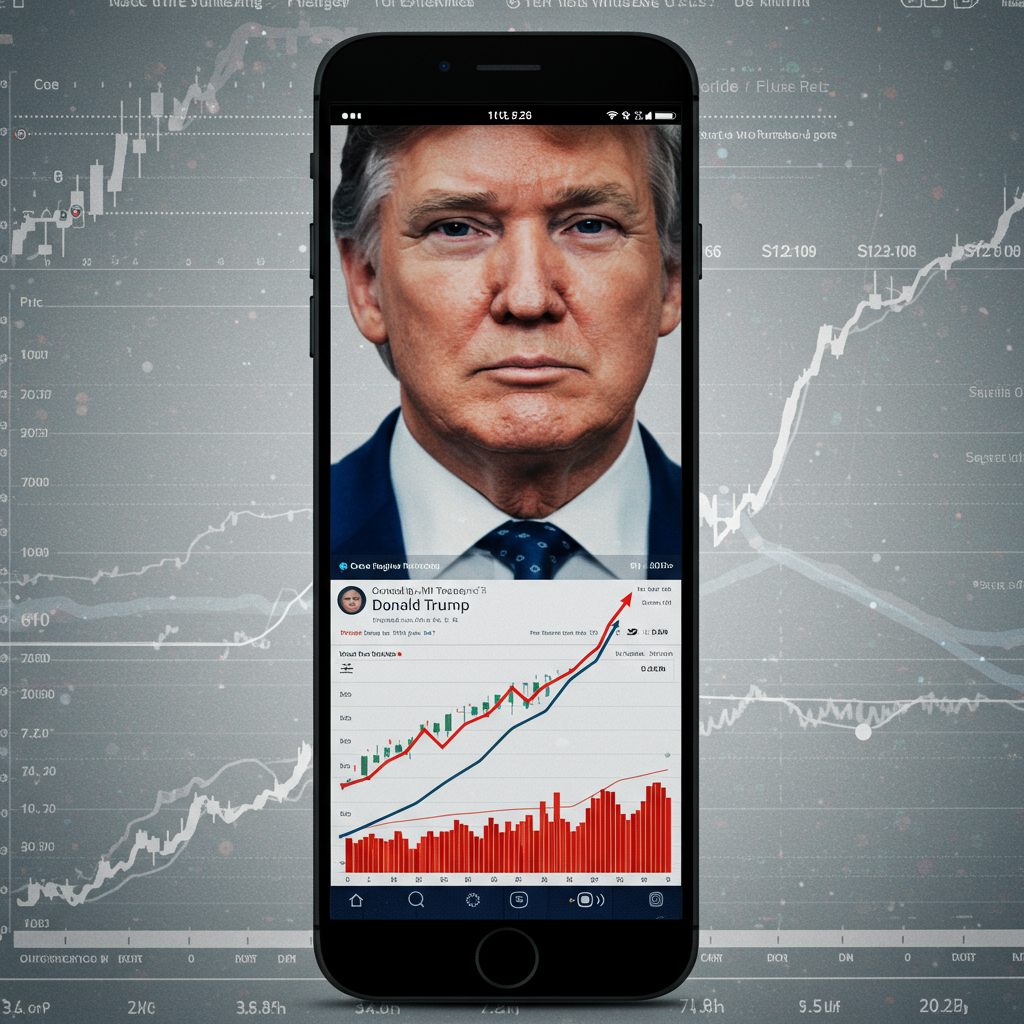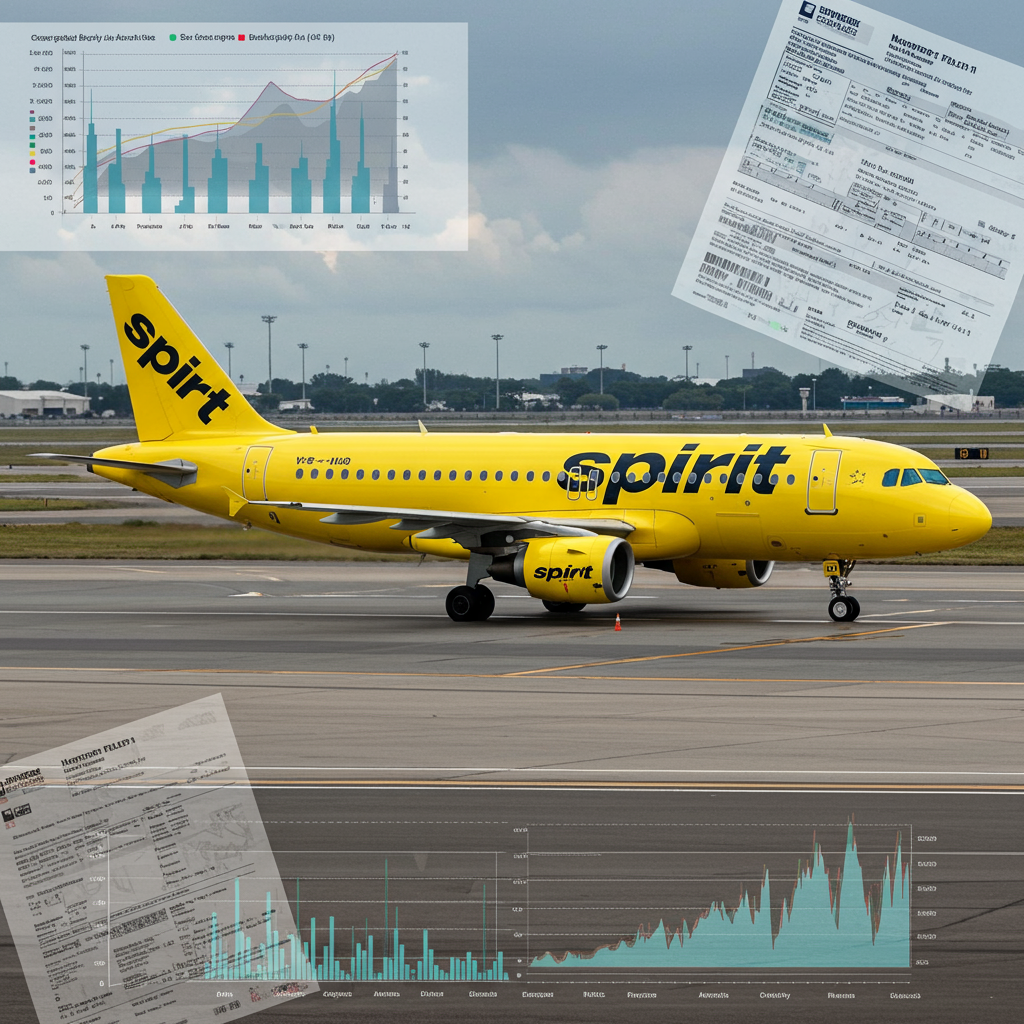The stock market often reacts dramatically to news, especially from influential figures. While retail investors frequently aim to profit by “buying the dip” – purchasing assets after a price drop in anticipation of a rebound – sometimes massive gains are linked to highly unusual events. One striking example involved a former U.S. President’s social media post preceding a market-moving policy change, raising significant questions about market dynamics and fairness.
In a moment that captivated Wall Street and Main Street alike, a single tweet seemed to act as an unprecedented market signal. This wasn’t just a general positive outlook; it was a direct call to action hours before a policy shift that injected trillions back into stock values. For many retail investors, navigating these volatile periods presents both opportunities and risks. Understanding the forces at play, from economic indicators to political pronouncements, is crucial.
The Market Landscape Before the Tweet
Before this pivotal event, the stock market was experiencing a period of uncertainty. The S&P 500, a key benchmark for U.S. stocks, had seen losses over the preceding four trading days. This created a backdrop where many investors were hesitant, unsure if the downward trend would continue or if a buying opportunity was emerging. It was precisely the kind of environment where the concept of “buying the dip” becomes relevant, albeit risky without clear catalysts for recovery.
At 9:37 a.m. on a Wednesday morning, former President Donald Trump posted on his platform, Truth Social. His message was succinct and emphatic: “THIS IS A GREAT TIME TO BUY!!! DJT”. This simple post immediately drew attention, given his past influence on markets and the unconventional nature of a former President issuing investment advice.
The Policy Announcement and Immediate Impact
Less than four hours after the social media post, a significant policy announcement followed. Former President Trump announced a 90-day pause on nearly all previously imposed tariffs. Tariffs, essentially taxes on imported goods, can have a dampening effect on the economy and corporate profits. A pause on these tariffs was perceived by the market as a positive development, potentially reducing costs for businesses and increasing consumer confidence.
The stock market’s reaction was swift and powerful. The S&P 500 index soared following the tariff pause announcement. By the end of the trading day, the S&P 500 closed up a remarkable 9.5%. This single-day surge added approximately $4 trillion back to the market’s total value. It recovered about 70% of the value lost over the previous four trading days, marking an extraordinary turnaround.
Gains for Specific Stocks and Key Figures
While the broad market saw massive gains, certain stocks experienced particularly notable surges, seemingly amplified by the context. Trump Media and Technology Group, the parent company of Truth Social where the “BUY!!!” post originated, saw its stock (trading under the symbol DJT) close up 22.67% on the day. This performance significantly outpaced the broader market rally. The post signed off with “DJT,” leading to ambiguity over whether the call was for stocks in general or specifically for his company’s stock.
This surge in DJT stock had a direct impact on former President Trump’s personal wealth. With a 53% ownership stake in the company, held in a trust, the increase in stock value added an estimated $415 million to his net worth in a single day. This highlights the potential financial implications when public figures with market connections make statements perceived as investment advice.
Another company with past connections to former President Trump, Tesla, also performed strongly that day, slightly outperforming even Trump Media stock. Tesla’s surge added an estimated $20 billion to Elon Musk’s wealth. While the tariff pause likely benefited many companies, the spotlight on DJT and Tesla raised questions given Trump’s previous endorsements of these specific entities.
Questions of Influence and Market Manipulation
The timing of Trump’s “buy” recommendation, just hours before a market-moving policy announcement, immediately raised concerns and questions about potential market manipulation. Critics argued the timing was incredibly “prescient,” perhaps “too prescient.” Securities law prohibits trading on insider information, which is non-public information that could affect a company’s stock price. It also prohibits aiding others in doing so.
Experts quickly voiced their concerns. Richard Painter, a former White House ethics lawyer, noted that individuals who acted on Trump’s post likely made significant gains. Painter suggested that Trump seemed to relish his perceived control over the markets but cautioned him to “be careful,” implying the potential legal and ethical pitfalls involved.
The central question became whether former President Trump was already considering or had decided upon the tariff pause when he made the “buy” post. When asked about the timing of his decision, his responses were described as “muddled,” including contradictory statements like “this morning,” “Over the last few days,” and “Fairly early this morning.” The ambiguity fueled speculation.
Navigating Ambiguity and Regulatory Silence
Adding another layer of complexity was the ambiguous nature of the “DJT” signoff on the post. As it is also the stock symbol for Trump Media, it was unclear whether the call was a general endorsement of the market or a specific recommendation to buy his company’s stock. This ambiguity wasn’t clarified by the White House when asked, leaving room for interpretation and potentially influencing investors towards DJT stock specifically.
Despite the significant gains and the public nature of the event, it highlighted a challenging area for market regulation. According to government ethics law expert Kathleen Clark, in previous administrations, a social media post like this from a former President, immediately preceding a major market movement tied to their actions, would likely trigger an investigation. However, Clark suggested an investigation was unlikely in this specific instance.
This situation underscores the unique challenges posed by high-profile individuals using platforms like social media to comment on financial markets. Their words carry significant weight, and when coupled with access to non-public policy decisions, it can create situations that blur the lines between market commentary and potential influence or manipulation.
Implications for Retail Investors
For retail investors, this event serves as a powerful, albeit controversial, case study. It demonstrates how public announcements and even social media posts from influential figures can trigger massive market movements, creating opportunities for quick gains for those positioned correctly (or lucky). However, it also highlights the immense risks involved in trading based on such signals.
Investing decisions should ideally be based on thorough research, understanding market fundamentals, and assessing long-term value, not impulsive reactions to social media posts, especially those surrounded by questions of ethics and manipulation. Relying on such signals is akin to gambling and exposes investors to significant downside risk if the expected market movement doesn’t occur or if regulatory actions are eventually taken.
The event also underscores the information asymmetry that can exist in markets. While policy decisions are ultimately made public, the timeline and internal considerations leading up to those decisions are not. When individuals with foreknowledge or strong influence make public statements that align suspiciously with subsequent events, it raises concerns about fairness and equal access to information for all market participants, including retail investors.
The Role of Social Media in Market Dynamics
This episode cemented the role of social media as a powerful, albeit unregulated, channel for market-related communication. Public figures, celebrities, and even retail investor communities now use platforms like Twitter, Reddit, and Truth Social to discuss, endorse, and sometimes coordinate market actions. This can democratize access to information and foster community but also facilitates the rapid spread of rumors, misinformation, and potentially manipulative signals.
Regulatory bodies like the Securities and Exchange Commission (SEC) typically scrutinize public statements that could mislead investors or manipulate markets, particularly from individuals deemed to have significant influence or access to material non-public information. However, policing every social media post from every influential figure is a complex challenge, especially when the lines between personal opinion, political commentary, and investment advice are blurred.
This event reminds retail investors of the importance of exercising caution and skepticism when encountering market-moving information on social media. While the allure of quick gains from events like this is strong, the potential for being misled or participating in markets influenced by questionable practices is significant. Prudent investing requires diligence and reliance on credible information sources.
Frequently Asked Questions
What happened with Trump’s “buy” tweet and the stock market surge?
On a Wednesday morning, former President Trump posted “THIS IS A GREAT TIME TO BUY!!!” on Truth Social. Less than four hours later, he announced a 90-day pause on nearly all his previously imposed tariffs. This policy change was seen as positive for the economy, causing the S&P 500 stock index to surge by 9.5% by the end of the day, adding roughly $4 trillion in market value and recovering significant recent losses.
Is it safe or advisable for retail investors to trade based on social media posts from public figures?
Trading solely based on social media posts from any individual, regardless of their public profile, is generally considered highly risky and not advisable for retail investors. Market movements are complex and driven by many factors. While a tweet preceded a major surge in this specific instance, relying on such signals is speculative, lacks fundamental analysis, and potentially exposes investors to risks like manipulation or trading on incomplete or misleading information. Prudent investing requires research and a well-defined strategy.
Why did the timing of Trump’s tweet raise questions of market manipulation?
The timing was highly suspicious because the “BUY!!!” tweet occurred just hours before former President Trump announced a policy change (the tariff pause) that directly and positively impacted the stock market, leading to a massive surge. Critics and ethics experts questioned whether he was aware of the impending policy decision when he made the public “buy” recommendation, raising concerns about the use of potentially non-public information to influence markets for personal or associated benefit, which could constitute a form of market manipulation.
The incident involving the former President’s tweet and the subsequent market surge remains a notable, and debated, event in recent financial history. It powerfully illustrates how unexpected factors, from policy announcements to social media activity, can dramatically impact stock values. While some retail investors may have profited in the immediate aftermath, the event underscores the complexities, potential ethical concerns, and inherent risks associated with market timing, especially when influenced by signals outside of traditional financial analysis. It serves as a reminder that while opportunities exist for buying the dip or riding market waves, due diligence and caution are paramount.
Word Count Check: 1189


